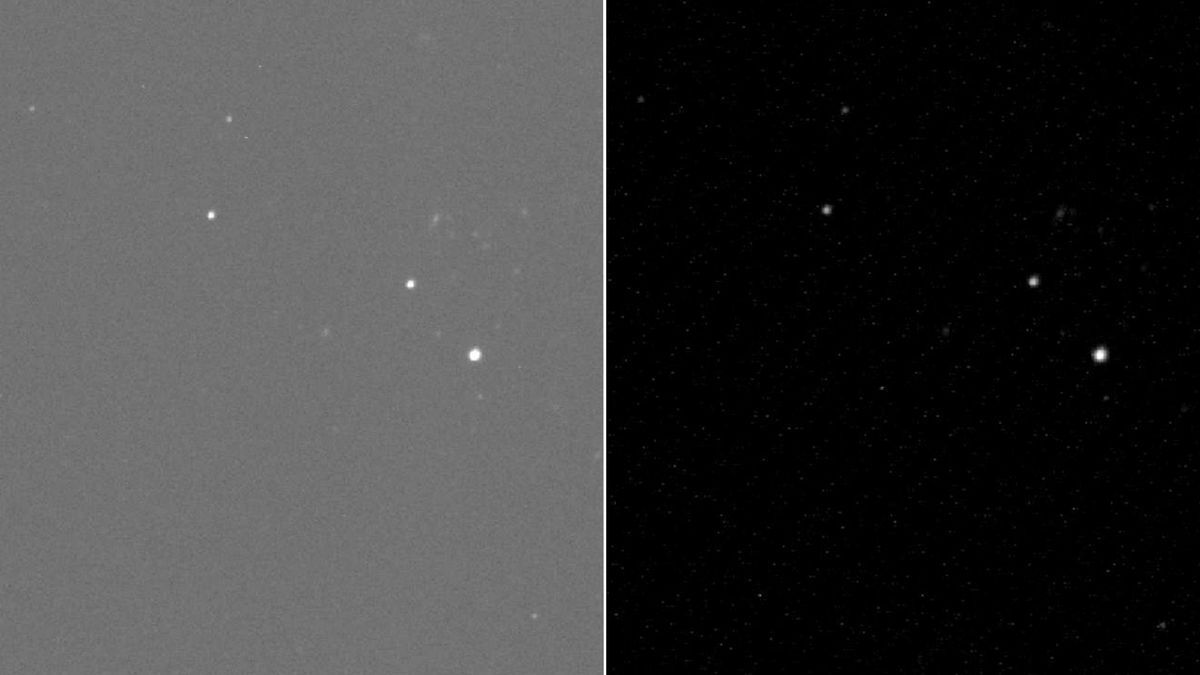- cross-posted to:
- space
- hackernews@derp.foo
- cross-posted to:
- space
- hackernews@derp.foo
Point them down and use a shade. Isn’t that the best way?
That’s is a great start. Some of the lamps in my neighborhood are so obtuse they point up. I call them “reverse streetlights”, because they cast a wide shadow around their base while illuminating the sky. Fuck this nonsense, it should be illegal. Then again it’s in the same development that put an every burning gas lamp in the front door of every house.
the technology connections guy had this great video clip he took while landing in ohare to show well made street lights vs not. IE if they were visible from the plane or just the light from the road reflecting up was.
This is actually fairly normal, you want them to illuminate the ground after all, so a reflective shade makes sense. Most street lamps already do this in most of the world
The ground reflects the light up however
Time to paint the ground with Vanta Black!
Why not more space based telescopes? Launch costs are rapidly dropping
- telescopes can only be as big as the rocket they are launched in
- It’s incredibly expensive still
- It’s nigh impossible to repair or upgrade without also having the budget of a hubble
- The engineering of space telescopes is a million times more complicated
- Building space telescope arrays is a million times more complicated than earth telescope arrays
- We don’t need a massive increase in more space junk throwing us towards kessler syndrome
- Space telescopes have shelf life’s
It’s definitely more money, and I don’t know very much about this stuff, but having a space based system would avoid a lot of issues like light pollution, atmospheric distortions, etc., no? Of course this isn’t needed for amateur or lower level stuff, but surely for scientific studies that’s a pretty big deal. Space junk is really pretty irrelevant since that concerns low earth orbits, while being at a Lagrange point is preferable for telescopes anyway (like Webb).
With ever more people and satellites on/around the earth, I just don’t see the problems with ground based imaging getting any better over the long term.
Despite the articles clickbait, light pollution isn’t a threat to astronomy. We build telescopes far from the city, usually on mountains. Modern techniques using lasers and active mirrors resolve atmospheric distortions.
The best telescopes go into space, it’s the best environment. We do not need to put the telescopes We currently put on earth into space, it would only create the problems I outlined above.
Yeah, but that doesn’t help us in our backyards. Hell, I got a couple of acres of swamp in the boonies, still can’t see shit out there.
Cheap LED lights already blink at 2x the power supply frequency. That blinking gives a lot of people nasty headaches and makes focusing difficult. Intentionally adding a more extreme dark period seems like it would be a major detriment to their function in illuminating roads for drivers.
This is the best summary I could come up with:
Light pollution is a growing threat to astronomy, but a new streetlamp technology could restore clear views of the night sky.
Light-emitting diodes (LEDs) consume only about 10% of the electricity required by traditional incandescent lights and last up to 25 times longer, so it’s no surprise that they have become commonplace over the past two decades.
When an entire city gets fitted with energy-saving LED lamps, this bright light scatters through Earth’s atmosphere and makes the sky glow with greater intensity.
In fact, the light pollution problem is worsening so fast that it offsets some of the improvements gained through advancements in telescope technology.
"Modern telescopes are highly sensitive and feel the impact of outdoor lighting of cities located at the distance of 50 or even 200 kilometers [30 to 120 miles].
The experiments, conducted at an observatory in the Caucasus Mountains in Russia, showed that the technology, dubbed the DarkSkyProtector, could reduce unwanted sky glow in astronomical images by 94%.
The original article contains 565 words, the summary contains 162 words. Saved 71%. I’m a bot and I’m open source!
This skips over a key point that connects the sense of para 2 and 3: “But there is a downside to LEDs: They’re much brighter than old-fashioned energy-guzzling light bulbs.” It also omits any explanation of what the new technology is or how it works. Bad bot.




